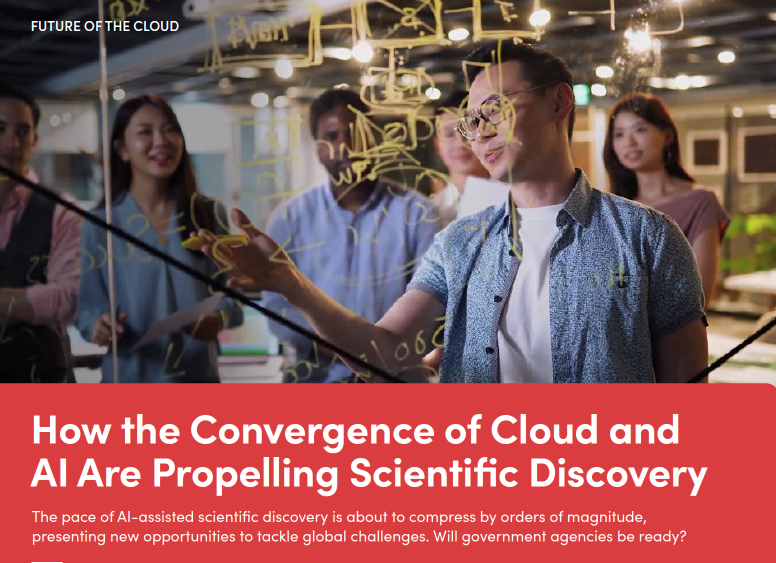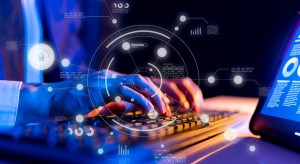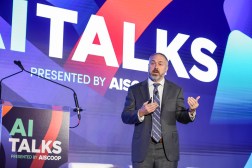- Sponsored
- Insights
How AI and the cloud are accelerating scientific discoveries. Will government be ready?

The convergence of artificial intelligence (AI) and high-performance cloud computing is dramatically reshaping the landscape of scientific research and discovery. Scientific breakthroughs that once took years to achieve are emerging in weeks, presenting new and powerful solutions to address complex global challenges.
However, the accelerating rate of innovation also raises critical strategic questions for government and public policy institutions and whether they are prepared for the surge, suggests a new report.
AI’s emerging impact in the laboratory has made one thing clear: The scientific and research community is at the cusp of a new era when AI-propelled science will move at unprecedented speed and likely reshape priorities for government agencies responsible for agriculture, environmental protection, health, national security and other domains.

The report, produced by Scoop News Group and underwritten by Microsoft, suggests that keeping up with this new pace—and the inherent and unforeseen consequences of scientific innovations accelerating into hyperdrive—promises to intensify pressures on federal policymakers who already struggle to keep pace with technological advances.
AI: Beyond the Chatbot
Many federal officials still picture AI as ChatGPT – a website bot or document summarizer, observes Jason Payne, Microsoft Federal’s Chief Technology Officer. There’s “incredible value there,” but “the next big phase of the application of AI will be in applied sciences, [bridging] the digital and physical worlds.”
Mitra Azizirad, Microsoft’s President and COO of Strategic Missions and Technologies echoes this view: “From my perspective, scientific discovery is the ultimate use case for AI.”
That’s also one of the reasons Microsoft has been making significant investments in recent years to develop customizable, AI-enabled platforms that can help scientists and researchers accelerate their research, according to the report.
The emerging need for AI for biosecurity
One example of those efforts is the development of a biosecurity platform called Microsoft Premonition. It uses remote “biological weather stations” with robotic sensing equipment and cloud-based analysis to detect biological anomalies earlier than was possible in the past.
“Microsoft Premonition represents a new kind of biological early warning system,” says Ethan Jackson, Senior Director and Researcher for Strategic Missions and Technologies at Microsoft and one of Premonition’s creators. He describes it as “an end-to-end bio-intelligence platform” that uses environmental DNA data and AI to provide early warnings about health security, invasive species, bioterrorism, and more – impacting various agencies.
“Microsoft fuses that information with climactic, genomic, environmental and other data, then applies generative AI and statistical machine learning to build [the equivalent of] biological weather maps to see anomalies in biological threats,” Jackson explained.
More broadly, Premonition represents a new model for helping governments identify and respond quickly to sudden biological and health threats, the report suggests – a lesson learned from the Zika and COVID outbreaks.
“Cybersecurity and biothreat detection are surprisingly similar,” argues T’Neil Walea, Microsoft’s Director of Strategic Missions and Technologies for U.S. Government. “It’s about understanding your baseline environment, then spotting the anomalies. Premonition offers this for biology.”
Walea sees advanced biothreat detection — and the ability to analyze biological data at a scale and speed previously unattainable — playing an increasing role in three core areas outlined in the report: health security, the environment, and national security. Taking a more holistic approach to bio intelligence will also “drive economic stability…and improve human welfare,” she says.
Government takes a growing interest
The National Science Foundation (NSF) is one agency that is taking a proactive interest in these developments.
“NSF got a larger charter from Congress to turn research into solutions for national security and keeping the United States competitive economically, scientifically and technically,” says Mike Pozmantier, Program Director at NSF’s Convergence Accelerator. “The mission from Premonition was create a worldwide biome map that could detect anomalies happening” and “to get in front of those things and understand them, and respond in meaningful ways.” says Pozmantier.
However, the report says the ability to detect biological changes in farmlands, forests and urban environments has implications for officials across the departments of Agriculture, Commerce, Health and Human Services, Homeland Security, Interior and State, as well as for EPA, FEMA, NIH and NOAA.
Download the full report and learn more about how Microsoft is using AI to power scientific research and discovery. And look for additional reports in our series “The Future of Cloud” underwritten by Microsoft.
This report was written by Scoop News Group for FedScoop and underwritten by Microsoft.






